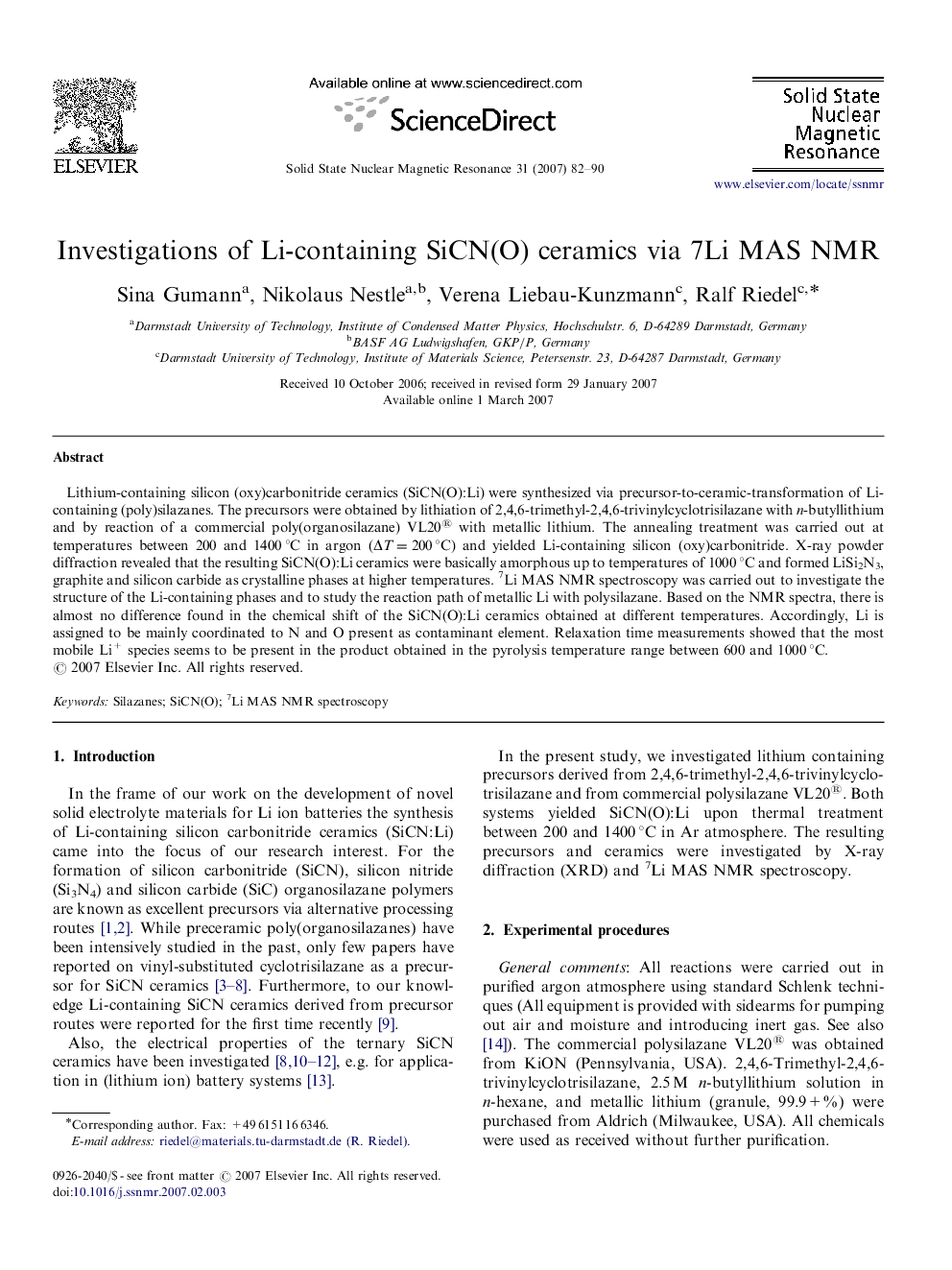| Article ID | Journal | Published Year | Pages | File Type |
|---|---|---|---|---|
| 5420920 | Solid State Nuclear Magnetic Resonance | 2007 | 9 Pages |
Abstract
Lithium-containing silicon (oxy)carbonitride ceramics (SiCN(O):Li) were synthesized via precursor-to-ceramic-transformation of Li-containing (poly)silazanes. The precursors were obtained by lithiation of 2,4,6-trimethyl-2,4,6-trivinylcyclotrisilazane with n-butyllithium and by reaction of a commercial poly(organosilazane) VL20® with metallic lithium. The annealing treatment was carried out at temperatures between 200 and 1400 °C in argon (ÎT=200 °C) and yielded Li-containing silicon (oxy)carbonitride. X-ray powder diffraction revealed that the resulting SiCN(O):Li ceramics were basically amorphous up to temperatures of 1000 °C and formed LiSi2N3, graphite and silicon carbide as crystalline phases at higher temperatures. 7Li MAS NMR spectroscopy was carried out to investigate the structure of the Li-containing phases and to study the reaction path of metallic Li with polysilazane. Based on the NMR spectra, there is almost no difference found in the chemical shift of the SiCN(O):Li ceramics obtained at different temperatures. Accordingly, Li is assigned to be mainly coordinated to N and O present as contaminant element. Relaxation time measurements showed that the most mobile Li+ species seems to be present in the product obtained in the pyrolysis temperature range between 600 and 1000 °C.
Keywords
Related Topics
Physical Sciences and Engineering
Chemistry
Physical and Theoretical Chemistry
Authors
Sina Gumann, Nikolaus Nestle, Verena Liebau-Kunzmann, Ralf Riedel,
